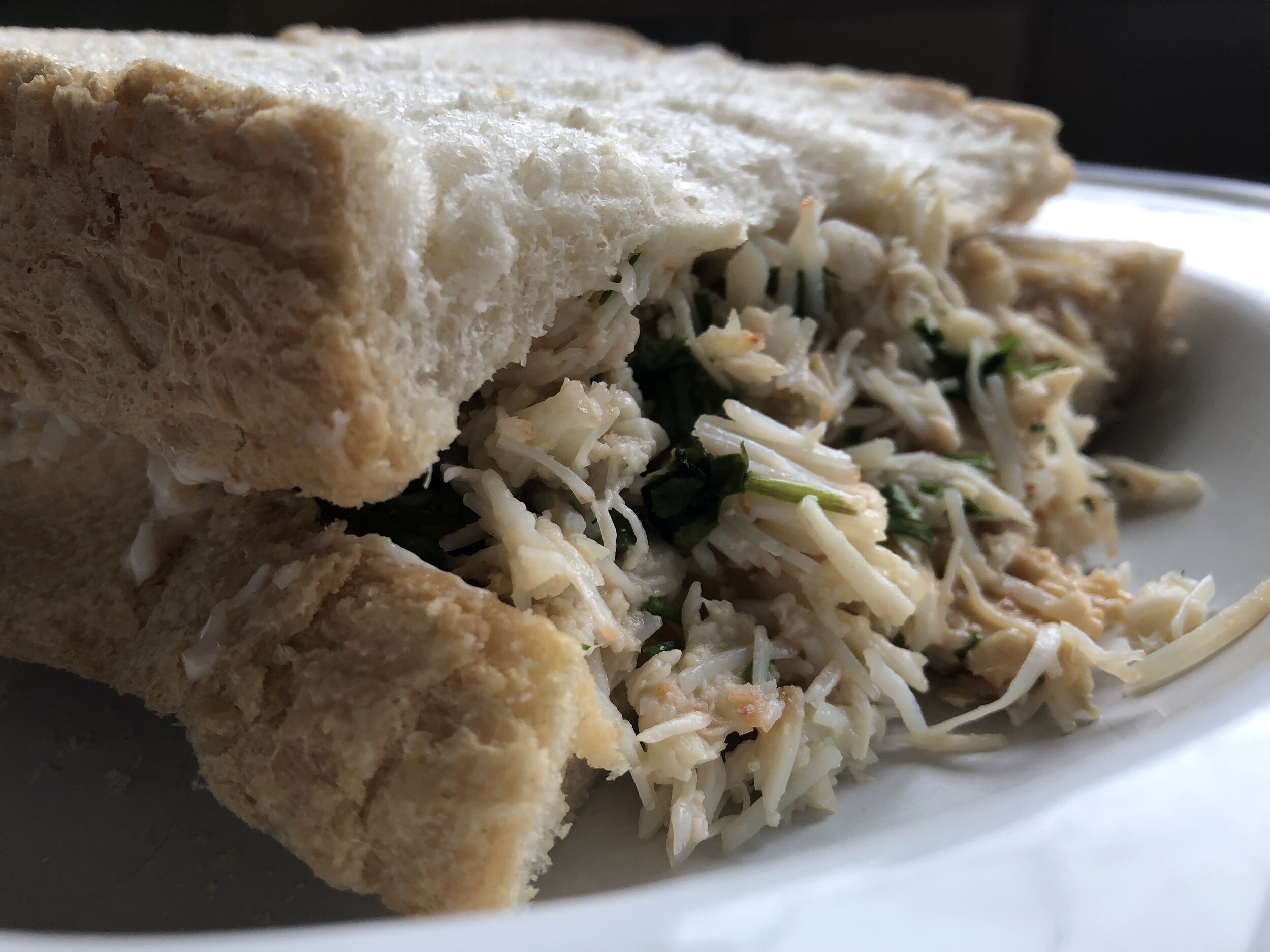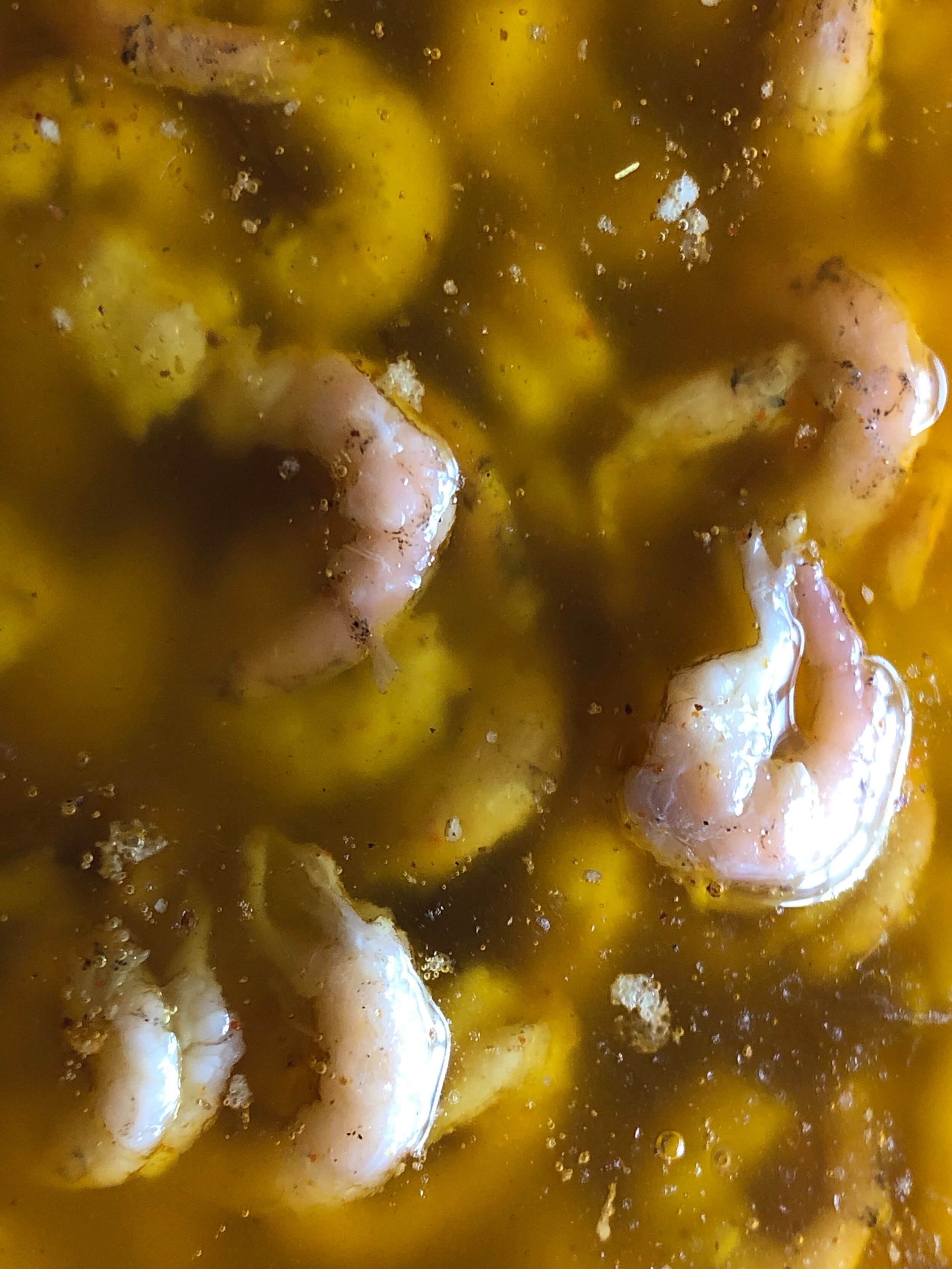Brown Crab, China and Jamie Oliver
It couldn’t have come at a better time really, because in the immortal but slightly erroneous words of the Apollo 13 mission. ‘Houston we have a problem’ - a big problem and it involves the story of one of our most abundant and traditional seafood species - the brown crab (Cancer pagurus).
Last week saw the Channel 4 re-run of Series 6 Jamie Oliver’s Jamie & Jimmy’s Friday Night Feast, where in episode 1 accompanied by his erstwhile partner in food heroics, Jimmy Doherty, Jamie sets out to discover why the UK consumer eats so little brown crab compared to other neighbouring nations who eat it by the lorry load.
It’s a very simple question to answer really, but a much harder one to address when as a country we consume so very little seafood anyway and even then 70% of what we do eat is imported. Yes, it’s still the ‘infamous five’ I’m afraid. Tuna, salmon, cod , haddock and the tedious, never ending, conveyor belt of farmed Asian prawns that adorn just about every supermarket cold shelf in the kingdom.
The paradox is (and I’ll say it once again), that we do have the best quality fish and shellfish in our waters of any country in the Northern Hemisphere and yet we export 80% of what we catch and farm. Brown crab, as Jamie Oliver found out during our seaside exploration on the South Coast, is mostly exported and more recently, mainly to China, in a colossal market worth approximately £50m/year.
Until now…..
Just before Christmas, Chinese government trade officials announced, quite glibly, that they would no longer be accepting shipments of live and processed brown crab from the UK until further notice and that’s before Coronavirus reared its ugly head. Now, I’m not going to delve into the political complexities surrounding this announcement, but what I can tell you is that we land around 30,000 tonnes of these wonderful crustaceans into UK ports every year, and relatively very little makes its way onto our tables. Half of that figure has been attributed to China, with other export markets such as France, Spain, Portugal etc accounting for most of the rest.
So notwithstanding the fact that Messrs Oliver & Doherty have been doing a sterling job reinvigourating our passion for the white and brown meat, there could soon be an awful lot of crab suddenly looking for a home, once the spring landings start from Bridlington to Brixham.
Now call me old fashioned, but when the fishermen have seen prices leap to around £4/kg on the quayside for their product in recent years, a drop to around £1.50/kg or less, seems realistic now and with massive investment in the crab catching sector on the back of the exports to China, a lot of fishermen are already mightily concerned about this year and the prospects for continued trade.
When I’m giving talks on seafood consumption and sustainability, I always say that any export market is never guaranteed and a fallback position is essential to protect incomes and livelihoods. That fallback position has to be the domestic market, but of course it’s incredibly difficult to be reactive, when you have a poor record on seafood consumption and a culture and retail sector that lacks understanding and passion for the product.
However, I’m eternally optimistic and a little knowledge does indeed go a long way. Jamie and Jimmy say it very well in their programme and people shouldn’t see it as just a jolly on the pier, but a message with integrity and reason. When we recorded the programme the Chinese crab market was in full swing, it’s now ebbed to a trickle and a full stop.
Have a look at the episode - you can find it here and at 20-26 minutes in on More4 (you might have to sign in). See what you think and I can guarantee that your mouth will be watering by the end……
The Ultimate Crab Sandwich
Everyone, yes everyone, should be made to try a good crab sandwich once in their life. My mother was obsessed with them and had a dream of retiring to Cornwall to sell them in a little kiosk on Looe harbour quay. I don’t honestly think she’d have made a lot of money, as such was her ardour for their flavour, she’d have just ended up making them for herself.
Ingredients (Serves 2)
250 g fresh picked white brown crab meat
100g fresh picked brown brown crab meat
2 tbsp of fresh, homemade mayonnaise
Several thick doorstep slices of fresh white bloomer loaf, or a split crusty baguette.
Cornish dairy butter
Half a lemon
Freshly ground black and white pepper.
Method
Mix the brown meat in with the mayonnaise, a squeeze of lemon and fold to a smooth consistency. Butter the bread liberally and apply the mayo/brown meat mix. Heap the flaked white meat on to the prepared slices, firm down a little and again squeeze a little lemon over. Dust with a little white pepper and grind over some black pepper too, to your taste.
Close the sandwiches off and firm again before slicing and serving. You could of course add fresh herbs parsley, coriander or chervil to the mix (the latter being particularly suited to crab), but actually there’s nothing like having it unadulterated. Enjoy with a cold beer. Beer and crab go phenomenally well together.
Homemade Potted Shrimps
Brown shrimps are yet another one of those locally-abundant seasonal shellfish that mostly get exported away from our shores. Apart from in the North West, where traditional shrimping and potting are still carried out in the likes of Southport and Morecambe and the product is laboriously but very efficiently hand peeled, the bulk of our national catch (about 5000 tonnes) go to Holland for mechanical peeling, using high pressure water and compressed air. This in itself is a very effective method but I think always loses the flavour. When the shrimps return to us vac-packed and pasteurised, they seem to have mysteriously quadrupled in price too, making them off the menu for most chefs.
I however, have the luxury of being able to catch my own at low tide with my trusty push net, or buying them straight off the boat from local Lowestoft skipper, Jeffery Melton. The tastiest are undoubtedly the ones I forage for myself, though all are good and the commercial shrimp boats cook their catch aboard in sea water in a gas-fired boiler.
Cooking them on the shore, on a portable stove having just netted them from their sandy burrows is immensely gratifying. The just-cooked sweet and saline, ozonous aroma is unforgettable. The shrimps, to be enjoyed at their best, should be peeled or eaten whole straight away, (don’t worry about the shells) They are literally so moreish, I have a real job not eating them all straight off like a bag of maltesers….
But a great and very traditional way of enjoying them is to incarcerate them in spiced butter - or potted and then liberally spread over some warm, sourdough toast. Quite an old fashioned tea time treat, and a little indulgent, but then so very easy to make and of course you can use North Atlantic prawns as an alternative, if you can’t find any brownies.
Homemade Potted Brown Shrimps
Serves 2
Ingredients
1 pint of cooked and peeled brown shrimps.
250g unsalted butter
A pinch of ground mace
A pinch of cayenne
A squeeze of lemon
2 small ramekins to serve in
Soughdough or wholemeal toast to serve on.
Method
Melt the butter over a low heat and strain off the solids so you’re just left with the clarified ghee. Introduce the mace and cayenne and stir over a low heat. Let the spices infuse into the butter. Add a squeeze of lemon, before taking the peeled shrimps and tamping them down into the ramekins with the back of a spoon.
Pour the spiced butter gently over the shrimps just to the top and allow to cool and set. Dust the solidifying mix with a little more cayenne and refrigerate. The potted shrimps will keep nicely at 2-4C for a few days or you can freeze.
To serve
Take the ramekins out of the fridge and leave to stand a while at room temperature to loosen the butter. Spoon the potted shrimps onto your freshly made warm toast and savour whilst thinking of the beach. Always does it for me.
Last of the Lobsters
The end of the summer for me means the drawing in of the evenings, a nip in the air and the final hauling of the lobster pots here on the East coast. Having normally started fishing around the end of March, we make the most of the season on lobsters through until September , after which the pots come ashore for maintenance and to evade the winter storms. Much of our gear here is fished close inshore and would be smashed up on the beach after too much hard weather.
So with the last of the lobsters I always like to finish as I started - a simply boiled fish that can be enjoyed and celebrated as a fitting end to a summer’s fishing. Dressed and served with a simple homemade mayo and either some hand cut chips or sautéed second crop new potatoes. It’s a flavour that has been with us over the summer and is now time to be replaced with the next locally seasonal seafood offering.
Poached Native Lobster with Lemon Mayonnaise
Serves 2
Ingredients
1 x 500-750 g live native lobster
2 free range egg yolks
1 tsp Dijon mustard
Freshly squeezed juice of half a lemon
Pinch sea salt
Table or sea salt for the poaching liquor.
Splash white wine vinegar.
Method
Boil 3 -4 litres salted water (or preferably clean seawater) in a large saucepan. Add a dash of white wine or cider vinegar and when you have a rolling boil prepare your live lobster.
Ideally you should keep the lobster at 0-2C for an hour before dispatching (I call it a pre-med), so that stress levels are kept to a minimum. The RSPCA home method is to dispatch by cutting down through the brain and central nervous system which kills the fish instantly. Splitting it lengthways is also effective,, but obviously not for poaching, only for baking or grilling/barbequeing.
Having dispatched the lobster, pop it into the saucepan and boil/poach for approximately 8-10 mins for that size of fish. I tend not to boil too fiercely and it is very easy to over cook, and toughen the flesh. After the requisite time remove the, now beautifully red, lobster and set aside to cool at room temperature, to let the meat ‘set’. When cool enough to handle it can be served or refrigerated.
Dressing

















